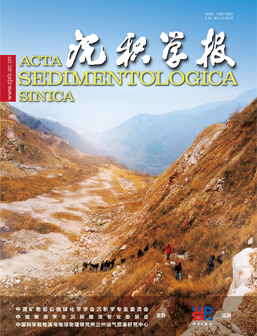Diagenetic fluid analysis and complex composite environment reconstruction of Middle Permian dolomite in western-northern Sichuan Basin
doi: 10.14027/j.issn.1000-0550.2024.021
- Received Date: 2023-07-18
- Available Online: 2024-04-09
-
Key words:
- dolomite /
- diagenetic fluid /
- diagenetic environment /
- western Sichuan Basin /
- Middle Permian
Abstract: [Objective] In the western Sichuan Basin, the Middle Permian extensively features marine carbonate rocks, with dolomite being a focal point of geological investigation. However, the diverse and irregular distribution of dolomite types in the Middle Permian results in significant variations in dolomite characteristics across different regions. The rich variety of dolomite types described above constitutes an excellent set of natural gas reservoirs in the Sichuan Basin. [Methodology] To unravel the fluid dynamics of dolomites in the study area and reconstruct their diagenetic environments, the study extensively reviewed a substantial body of previous literature and references. samples from 16 well cores and 9 sections underwent a comprehensive analysis. Utilizing techniques such as microscopic thin section observation, cathodoluminescence, carbon-oxygen isotopes, strontium isotopes, and ICP-MS rare earth element analysis, the petrological and geochemical features were thoroughly investigated. [Results] The research findings can be summarized as follows: (1) Dolomite Types: Dolomites in the region can be broadly categorized into homogeneous dolomite and zebra-like dolomite. The primary type of homogeneous dolomite is granular dolomite, while zebra-like dolomite includes homogeneous dolomite with dark bands, predominantly filled with hydrothermal saddle dolomite. (2) Isotopic Analysis: Carbon Isotopes: Samples from the study area exhibit positive anomalies in carbon isotopes. Oxygen Isotopes: Oxygen isotope values show significant differences, with the filling material (saddle dolomite) exhibiting notably lower values than homogeneous dolomite. Oxygen isotope values in samples from southwestern Sichuan are significantly lower than those from northwestern Sichuan. (3) Rare Earth Elements: Rare earth element analysis reveals a negative anomaly in δCe and a positive anomaly in δEu, indicating that the oxidation conditions of the products were influenced by later-stage hydrothermal alteration. (4) Strontium Isotopes: Strontium isotopic values of homogeneous dolomite fall within the range of contemporaneous seawater. However, the filling material in southwestern Sichuan exhibits strontium isotopic values higher than the seawater range and significantly higher than homogeneous dolomite. [Conclusion] (1) Hydrothermal Modification: The diagenetic fluids responsible for the formation of homogeneous dolomite in the western to northern Sichuan region are primarily derived from contemporaneous seawater. Subsequent hydrothermal activities lead to modifications, resulting in the formation of hydrothermal saddle dolomite. Notably, the intensity of hydrothermal activity is more pronounced in the southwestern region and relatively weaker in the northwestern part of western Sichuan. (2) Diagenetic Environments: The diagenetic environments of dolomites in the study area encompass four types: marine diagenetic settings, shallow-to-intermediate burial diagenetic environments, and intermediate-to-deep burial diagenetic environments. The marine environment refers to an open-sea, grain shoal environment, predominantly developing fine to medium-crystalline dolomite. Inclusions exhibit a uniform temperature below 85°C. Shallow-to-intermediate burial environments, with burial depths ranging from approximately 800m to 2000m, primarily foster homogeneous fine-crystalline dolomite and some medium-to-coarse-crystalline dolomite. Inclusions exhibit a uniform temperature above 112°C. Hydrothermal saddle dolomite mainly develops in intermediate-to-deep burial environments with burial depths exceeding 3000m, and inclusions exhibit a uniform temperature above 175°C. This comprehensive research provides nuanced insights into the diverse dolomite types and their diagenetic histories, contributing significantly to the broader understanding of sedimentary processes and geological evolution in the western Sichuan Basin during the Middle Permian period.
| Citation: | Diagenetic fluid analysis and complex composite environment reconstruction of Middle Permian dolomite in western-northern Sichuan Basin[J]. Acta Sedimentologica Sinica. doi: 10.14027/j.issn.1000-0550.2024.021 |






 DownLoad:
DownLoad: